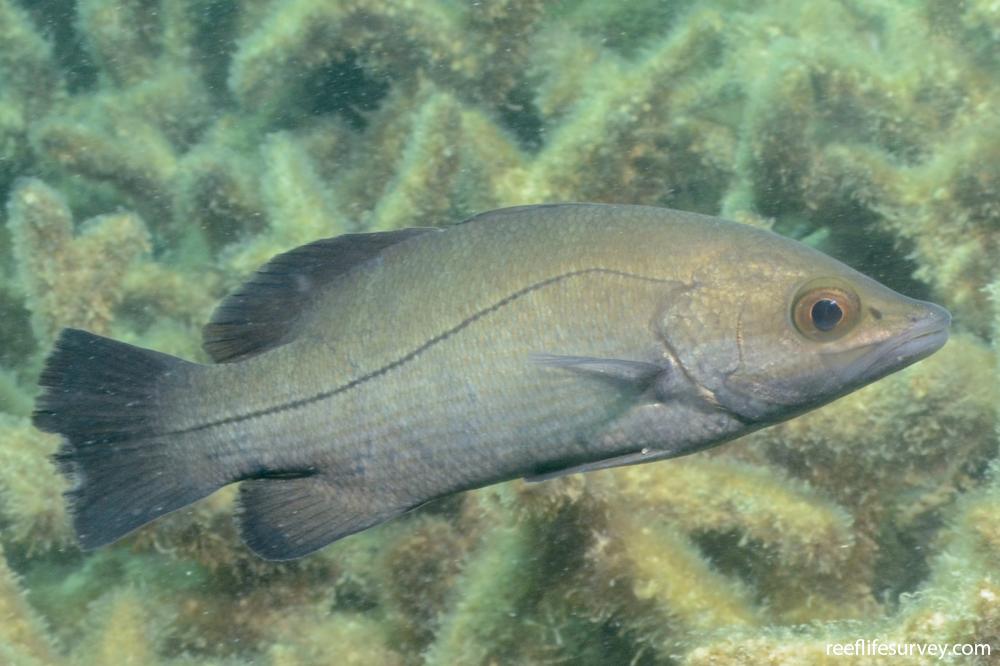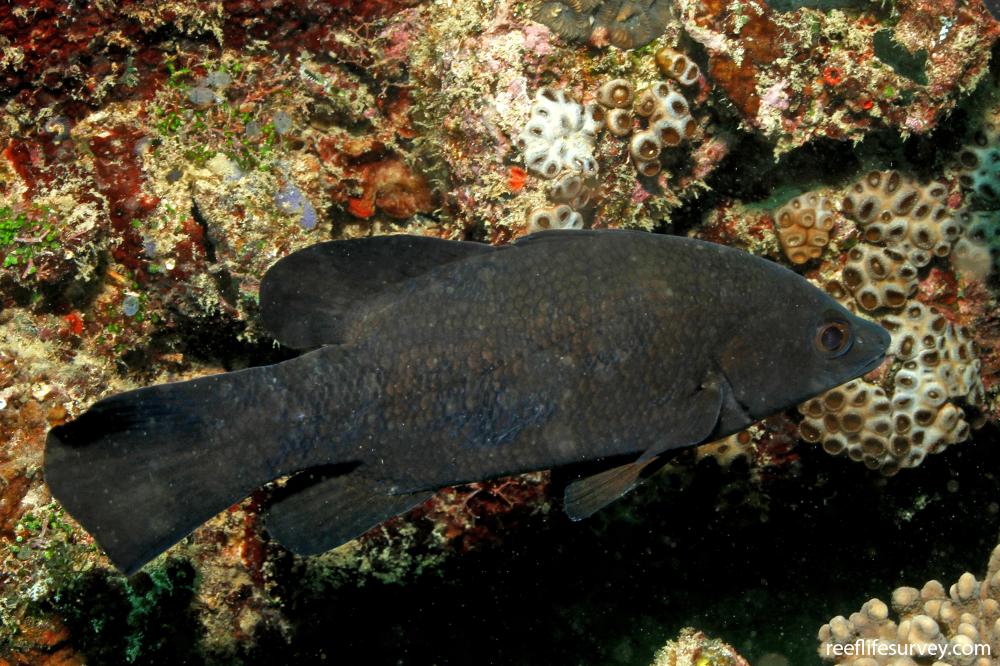Psammoperca waigiensis
Sand bass | Dwarf Palmer Perch | Glasseye Perch | Jewel Eye | Pink-eyed Bass | Reef Barramundi | Sand Perch | Waigieu Seaperch | Psammoperca waigensisDistribution
Tropical Indo-Pacific
Description
Concave head, dark lateral line and reflective reddish eye. Colour can vary from dark reddish brown (almost black) to light silvery grey or brassy. Usually remains in groups within caves during the day but will also forage during overcast weather. Similar in appearance and closely related to Lates calcarifer (Barramundi). Length to 47 cm.
Information
Max Size: 47 cm
Sea Temperature Range: 18.5-31.2°C
Depth: 3-32m
Habitat Generalization Index: 8.31
Also referred to as the SGI (Species Generalisation Index), this describes the habitat niche breadth of the species. Species with values less than 15 are found in a relatively narrow range of reef habitat types (specialists), while those over 25 may be found on most hard substrates within their range (generalists). Learn more here.
Conservation and Rarity
IUCN Status: Not Evaluated
Occurrence: Frequent (11.9% of sites)
Occurrence describes how often the species is found on surveys within its distribution. It is calculated as the % of reef sites surveyed by RLS divers across all the ecoregions in which the species has been observed
Abundance: Several (6 per transect)
Abundance is calculated as the average number of individuals recorded per RLS transect, where present.
Edit by: Joe Shields





